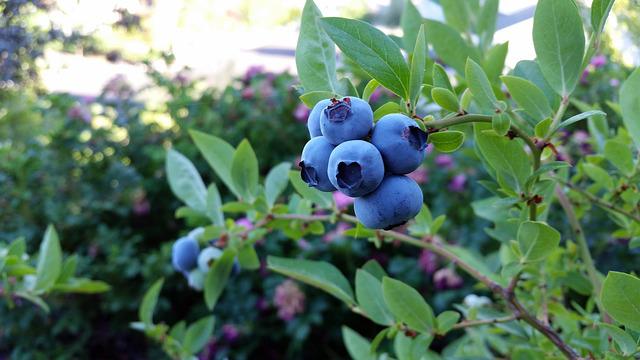Are Blueberries Perennials?

Blueberries are perennials, and they can live for up to 10 years or longer. For this reason, they are an excellent plant to grow if you want something that will produce fruit for a long period without the need to replant it every year.
Blueberries are often overlooked as a viable crop option, even in a colder USDA zone. If they were grown, they were almost certainly lowbush varieties hardy in the cold. This is because growing high bush blueberries (Vaccinium corymbosum) in zone 4 was previously considered impossible, but new cultivars have made growing blueberries in zone 4 a possibility. This provides more options for the home gardener.
Table of Contents
Types of Blueberries
Highbush Blueberries
The eastern and northeastern United States is home to the northern highbush blueberry bush varieties. They can reach a height of 5-9 ft (1.5-2.5 m). They are the blueberry varieties that necessitate the most regular pruning.
Lowbush Blueberries
As the name implies, Lowbush blueberry varieties are smaller and more upright than highbush varieties, growing to a maximum height of 1 12 feet (0.5 meters). Plant a variety of cultivars to ensure a large harvest. These types of blueberry bushes need very little pruning. It is recommended to cut the plants back to the ground every two to three years. When it comes to container gardening and ornamental landscaping, Top Hat is an excellent choice. In USDA zones 3-7, you’ll find the lowbush shrub known as ruby carpet.
Rabbiteye Blueberries
Between 6 and 10 feet (2 and 3 meters) tall, rabbiteye blueberries can be found in the southeastern United States. They were designed to thrive in hot, dry climates. They are more susceptible than northern highbush blueberries to cold winter damage. This cultivar has thicker skins, more visible seeds, and stone cells in older specimens.
Hybrid Half-High Blueberries
It’s possible to grow half-high blueberries in temperatures ranging from 35 to 45 degrees Fahrenheit (1 to 7 C.). The plants of this medium-sized blueberry can reach heights of 3 to 4 feet (1 m). Container-grown plants do well. Compared to highbush varieties, they require less pruning.
Planting and Maintaining Blueberry Bushes
The establishment of blueberries takes time, but the maintenance required by the gardener is not significant. Observe the color and growth of the leaves, perform a little pruning and feeding, and test the pH of the soil once a year.
Soil, Nutrients, and Water
Large quantities of pine needles decompose in the soil and make it acidic and rich in humus, so blueberries are most commonly found in northeastern regions where small shrubs live at the edges of woodlands. There is a plentiful supply of pine needles to decompose. For the most part, other locations will require soil amendments to meet this standard.
Once the plants are established, check the pH of the soil every year and amend as necessary. After the first year, organic fertilizers designed for acid-loving plants can be applied. Ensure that the plants are adequately protected by a thick layer of straw, wood, or leaf mulch. In decomposition, they provide nutrients to the plants while simultaneously inhibiting weed growth.
One inch of rainfall per week (whether from rain or irrigation) should be provided to your blueberries, and the soil should be kept consistently moist.
Light, Temperature, and Humidity
Plant blueberries in full sun rather than partial shade because the shade will keep temperatures cold in the early spring when the plants attempt to flower and produce fruit. Plants will benefit from some afternoon shade in hotter climates, such as central California. It depends on the variety, whether it is cold hardy and how many chill hours it needs. It also depends on the humidity preference of the variety. Several rabbit-eye varieties, for example, thrive in warm, humid climates such as Florida, whereas southern highbush varieties can withstand the dry heat of the Sacramento Valley.
Pruning
If there are any unhealthy branches on the blueberry plants when they are planted, they should be removed, leaving a few strong canes approximately 10-12 inches tall. Every year, you should prune again. Please keep in mind that plants should not be allowed to produce fruit for the first two years. Pruning blueberry bushes while they are dormant will aid in developing a healthy, attractive shape and the production of a higher yield. In the end, you want to have a bush that is narrow at the base but wide, open, and clear above the soil line.
